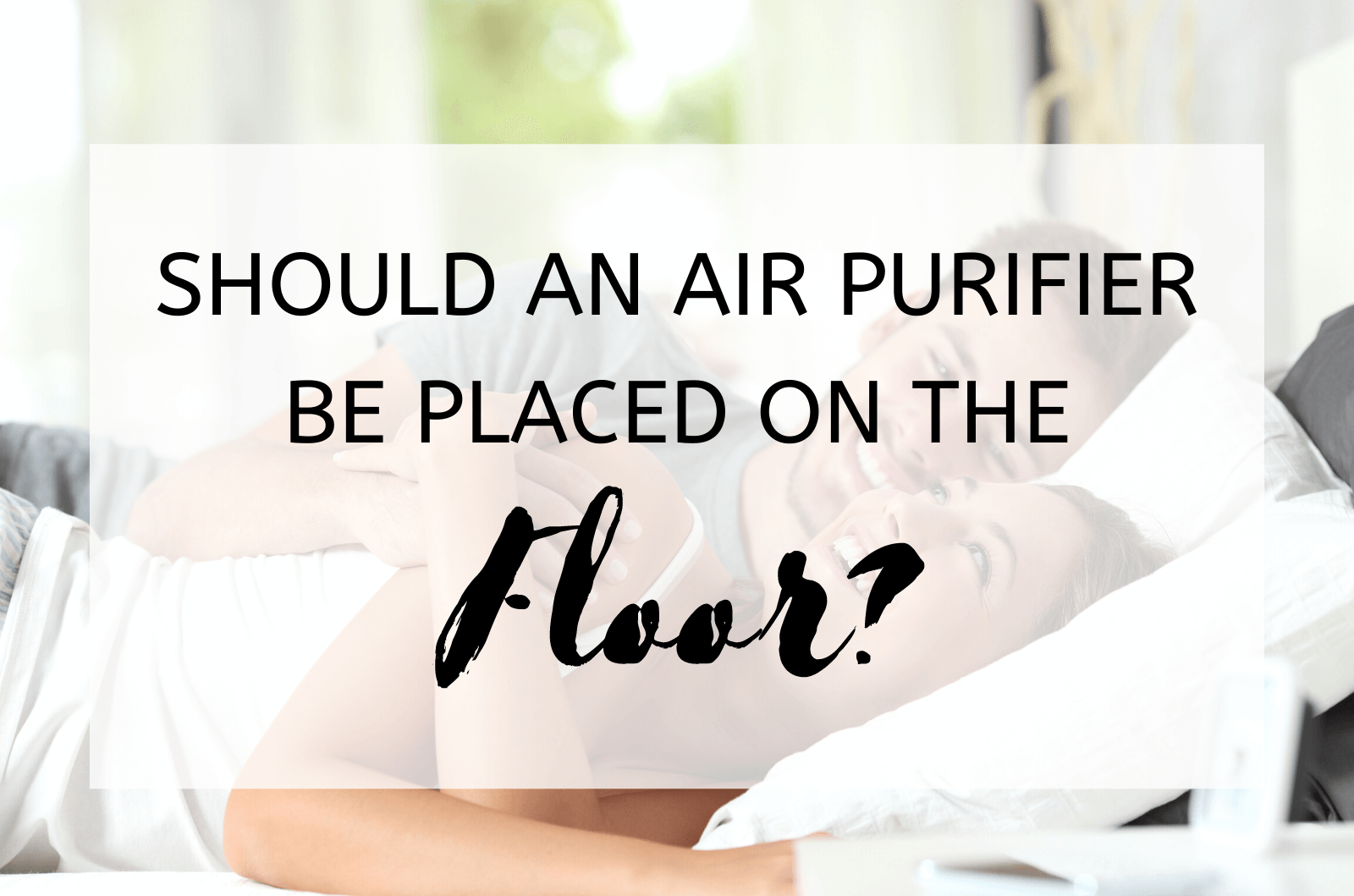More and more people are prioritizing their health these days with healthier eating habits and staying fit. However, our home environment can be a hidden culprit of unseen health hazards including poor indoor air quality. The World Health Organization states that 91 percent of people reside in areas with substandard air quality. While we can’t control the outdoor air, we can control the air inside our homes.
A portable air purifier can make a huge difference in the quality of the air we inhale inside our homes, but many people are confused about where to place the purifier, and question if their air purifier should be placed on the floor. Since air flows horizontally and vertically, it is not ideal to place smaller air purifiers on the floor, rather, between 3 to 5 feet off the ground, but always check with the manufacturer to be sure. Hot air rises, so a raised air purifier will capture the airflow better, allowing it to effectively clean the air in and around the room rather than just the air that settles to the bottom.
The United States Environmental Protection Agency (EPA) claims that indoor air is two to five times more polluted than outside air due to less circulation and tightly sealed homes today. This poor airflow indoors allows contaminants to thrive and potentially cause respiratory infections, triggering asthma attacks, and even neurological problems. This makes the implementation of a household air purifier a necessity.
Should an Air Purifier Be Placed on The Floor?
If you invest in an air purifier, place it in an area that will purify as much of the room as possible. To get the most out of your investment, it’s important to understand how these units operate. Air purifiers consist of a fan and usually a multi-stage filtration system. The fan draws the air in and then passes it through the filters, which trap contaminants like pollen, dust, pet dander, bacteria, and mold; then releases the clean air back into the room. Placing a portable air purifier on the floor limits the unit’s circulation efficiency.
Elevate Your Air Purifier
Most portable air purifiers can be placed on a sturdy elevated surface or piece of furniture assuming the surface can handle the weight, such as a desk, dresser, or a table. There are also mountable wall units available, which have the added benefit of being space-saving while increasing the floor-to-ceiling purifying efficiency.
Place Air Purifiers in An Unventilated Area
Room air purifiers also work optimally when the doors and windows in the room are shut. Because the air flows wherever there is an open door or window, the unit will try to draw air from those areas. While we typically consider open windows and fresh air a good thing, when an air purifier is being used, this defeats the purpose by diluting its efficiency.
As an air purifier draws air in, cleans it, and pushes the purified air back into the room, an open window will circulate more polluted air in. The object of the purifier is to have a room full of fresh air rather than cleaning polluted air and never reaching a point where the air is optimally purified.
Keep Air Purifiers Away from Electronics
Some electronic appliances can cause interference from another electrical or electronic system. These devices can include microwaves, stereo equipment, and TVs. It’s best practice to place your unit away from these appliances to avoid electromagnetic interference, or EMI, from electromagnetic induction or externally emitted electromagnetic radiation. Most air purifiers will not be affected by small appliances.
Keep Air Purifiers Out of Humid Areas
If you’re using a humidifier in the same room as your purifier, it’s best to keep them at opposite ends of the space and switch the humidifier to its lowest setting. It’s also prudent to keep portable air purifiers out of humid areas, such as steamy bathrooms. The filters will absorb the moisture and shorten its lifespan.
Place Air Purifiers in Open Areas
It’s prudent to avoid placing your air purifier in a space where it will be blocked by furniture or shelves. Most units have their intake in the front and the air intake needs access to the entire whole room to capture the airborne particles permeating the air. The same applies to the top of the unit. If placed underneath a shelf, the fresh air will have a difficult time flowing out from beneath the obstruction.
Benefits of Having an Air Purifier
Air purifiers can remove up to 99.9% of particulates based on the square footage down to a certain micron level which can improve your health immediately as well as long-term. From respiratory benefits to improved sleep, air purifiers improve the quality of life. Here are just some of the benefits of having a whole house or portable air purification system in your home:
- Air Purifiers can relieve the symptoms of asthma. One in 12 people suffer from asthma which can be caused or exacerbated by pet dander, dust, and pollen that permeates the home’s air. Air purifiers remove these irritants from the air, reducing the risk of asthma attacks.
- Air purifiers can absorb and neutralize unpleasant odors in the home.
- Air purifiers decrease the risk of catching airborne diseases.
- Air purifiers remove allergens in the air that cause hay fever, coughing, and sore throats, which affect your sleep. Purified air will help you sleep better and improve your productivity.
- Air purifiers can remove the carcinogenic elements found in building materials that may be airborne if you live in an old building.
- Air purifiers can increase one’s life expectancy; after all, harmful chemicals and gases from household products are removed before you can inhale them.
The Best Rooms to Place Your Air Purifier
Air purifiers work optimally when placed in the bedroom or the living room. The object of an air purifier is to inhale clean, fresh air in the areas where you spend most of your time. Smaller air purifiers have the advantage of being portable, so you can relocate them from room to room and reap the benefits even if you move.
Other Ways to Keep Your Indoor Air Clean
Air purifiers work well to clean the air, but there are also a few other tips to aid in the process of keeping indoor air clean:
- Vacuum the floor and carpets once or twice a week to prevent the build-up of allergens and dust.
- Buy indoor plants to help filter the air and dilute carbon dioxide levels.
- Dehumidifiers prevent the growth of mildew and mold.
- Keep windows and doors open when you are not using your air purifier.
- Use exhaust fans in the kitchen and bathroom.
If you like to breathe the cleanest, freshest air whenever possible, an air purifier is highly recommended. It should be placed in areas where it can be the most effective, but ideally elevated if possible as a portable unit will not circulate or clean the air in your room as effectively when placed on the floor. A small air purifier operates at its best when elevated between three to five feet, with no furniture or shelves blocking the airflow circulation.





Can a purifier be placed near intake vents and baseboard floor vents for hot air
Can an air purifier be put near air heating vents
We would advise checking with the specific manufacturer on this, Donna. Great question, btw.